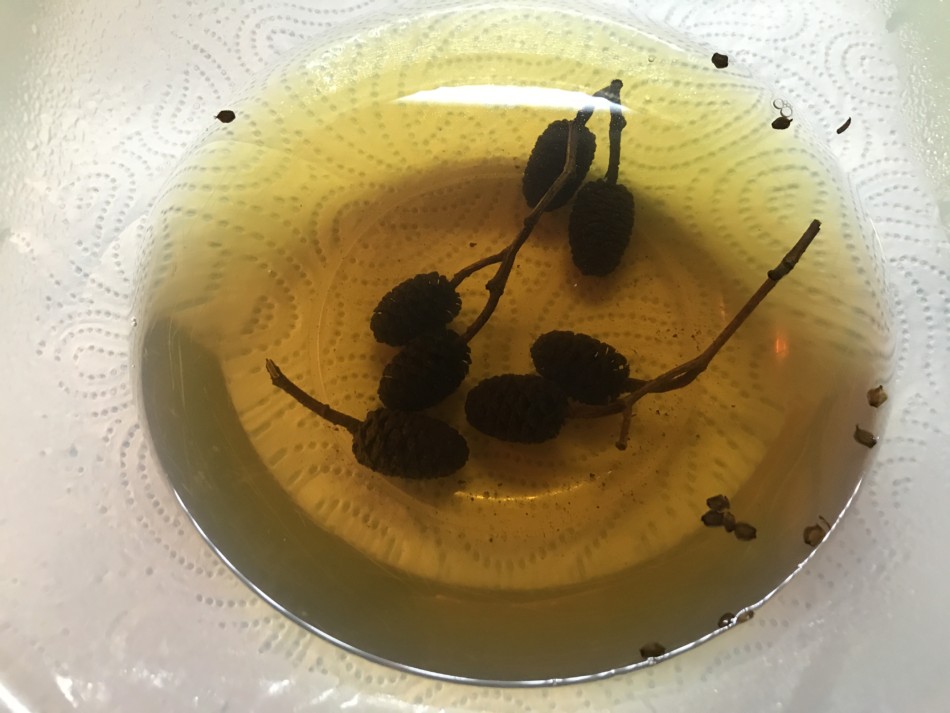This article may contain some affiliate links to products. The links provide me a small percentage of commission but do not cost you anything extra to use. (See full disclosure statement here ).
).
Adding tannins to your fish tank is easy to do. And tannins have several beneficial effects for your fish, their tankmates, and even your aquatic plants.
Tannins have antifungal, antibacterial, and antiparasitic properties that are good for fish health. They also have a calming effect which helps to reduce stress related illness. Tannins also help to improve the water quality and to stabilize PH levels. And for tropical fish in particular, tannins help to create a more natural environment for them to thrive in.
I’ve put together some information and tips about how to add tannins, how to reduce them, and how to remove them from your aquarium.
So let’s get started
How To Add Tannins To Your Fish Tank Water
Probably the most popular way to introduce tannins into a fish tank is by adding botanicals. Botanicals in the fish keeping hobby are things such as wood, leaves, cones and pods. All of these will leach tannins into the water as they become soaked and begin to naturally break down.
Here’s a few examples of aquarium botanicals:
- Wood – Various driftwoods
 (Amazon link) such as Mopani, Bogwood, Bonsai and Cholla release a fair amount of tannins into the water. Other types of wood, particularly those dark in colour and suitable for aquarium use, will release tannins too.
(Amazon link) such as Mopani, Bogwood, Bonsai and Cholla release a fair amount of tannins into the water. Other types of wood, particularly those dark in colour and suitable for aquarium use, will release tannins too.
- Leaves – Catappa Leaves
 / aka Indian Almond Leaves (Amazon link), Oak leaves, Beech leaves and Mulberry leaves will all release tannins into the water.
/ aka Indian Almond Leaves (Amazon link), Oak leaves, Beech leaves and Mulberry leaves will all release tannins into the water.
- Cones – Alder Cones
 (Amazon link) add beneficial tannins to the tank water. Alder cones are often used in both fish and shrimp tanks and are usually easy to get hold of. You may be able to source other types of cone such as Indian Casuarina Cone or the Birch Cone which both contain tannins.
(Amazon link) add beneficial tannins to the tank water. Alder cones are often used in both fish and shrimp tanks and are usually easy to get hold of. You may be able to source other types of cone such as Indian Casuarina Cone or the Birch Cone which both contain tannins.
- Pods – Pods, whether they still contain their seeds or not, are another way to add natural tannins to your fish tank. A few examples of pods are Lotus, Magnolia and Monkey Pot pods. There are other types of pods suitable for fish tanks so it’s worth checking out what’s available in your area or to order online.
Added bonus to using botanicals – Wood, leaves, cones and pods all create extra surface area for biofilm to grow on. Biofilm is good for your aquarium and is also a food source for fish, shrimp and snails. As the botanicals break down in the water they provide healthy food for your tank inhabitants to feed on too.
Tip: If you forage for your own botanicals make sure you gather them from areas that are free from traffic pollution and free from pesticide spraying.
If you don’t want to add botanicals to your aquarium, but you want the benefits of tannins, there are other options. One option is to add a liquid tannin solution to the tank water following the instructions on the packaging.
Another option is to use decaffeinated tea bags. Just steep the tea bags in boiling water, leave the water to go cold, then add it to your tank.
It’s up to you how you add the tannins, just be sure you’re doing it in a safe way.

How To Reduce Tannins In Your Fish Tank Water
Although tannins are good for your fish tank they do stain the water. A tank that contains a lot of tannins is called a Blackwater Aquarium. The tannins in the tank turn the water from clear to various shades of ‘tea-stained’ depending on how much tannin is in the water column.
Some fish keepers keep blackwater tanks for specific fish species that need a high level of tannins. Which means that they are happy to have darker water in the aquarium. If you don’t want your tank water to look dark, but you still want to give your fish some beneficial tannins, there are a few ways to reduce the darkening of the water.
Here’s a few ways to reduce the darkening effect of tannins
- Remove some of the tannin rich wood and other botanicals and do a partial water change. Having less tannin rich material in your tank will reduce the blackwater effect.
- Swap your tannin rich wood for wood that contains less tannins. Manzanita, Spider, Tiger and Redmoor Root have a low tannin level compared to some other aquarium woods.
- Boil or soak any wood, leaves, cones or pods before you add them to the tank. This not only removes a lot of the tannins but also helps them to sink more quickly when you add them to the tank. Some woods need to be soaked for several days/weeks before they stop floating. Alternatively you can keep them down using rocks/pebbles.
Tip: Steeping wood, leaves, cones and pods removes a lot of the tannins and also sterilizes them. Steep them in boiling water for 10-15 minutes and stir them a couple of times. Leave them to cool down before adding them to your tank.
Note: Take a look at the main photo for this article to get an idea of how much tannin is released when a few Alder Cones are soaked in boiling water for about 10 minutes.
How To Remove Tannins From Your Fish Tank
If you’ve added tannins to your fish tank but you no longer want, or need them, its easy to get rid of them completely. It does take a little time and patience. But the sooner you get started the sooner the tannins will be removed.
Remove all tannin producing botanicals from your aquarium – wood, leaves, cones and pods. Then do regular water changes until the tank water is as clear as you want it to be.
This can take several water changes to accomplish, so be patient.
You may also need to scrub down any tannin stained tank decorations depending on how you want them to look.
Tip: Tannins help to regulate the water PH which promotes healthy water conditions. However, if you have a lot of tannins in your water they can lower the PH level too far for your particular fish species. So check your PH levels regularly if your fish need a certain PH level.
Overall, tannins are good for a fish tank. They’re good for the fish, their tankmates and the water quality. They’re even good for aquatic plants too.

